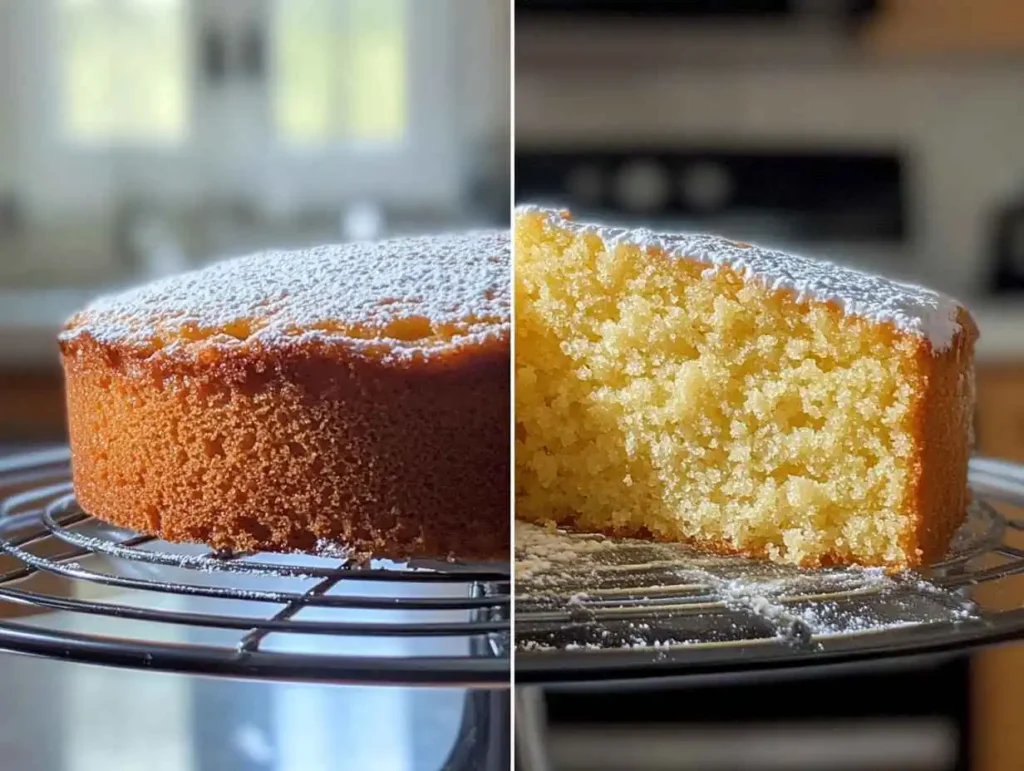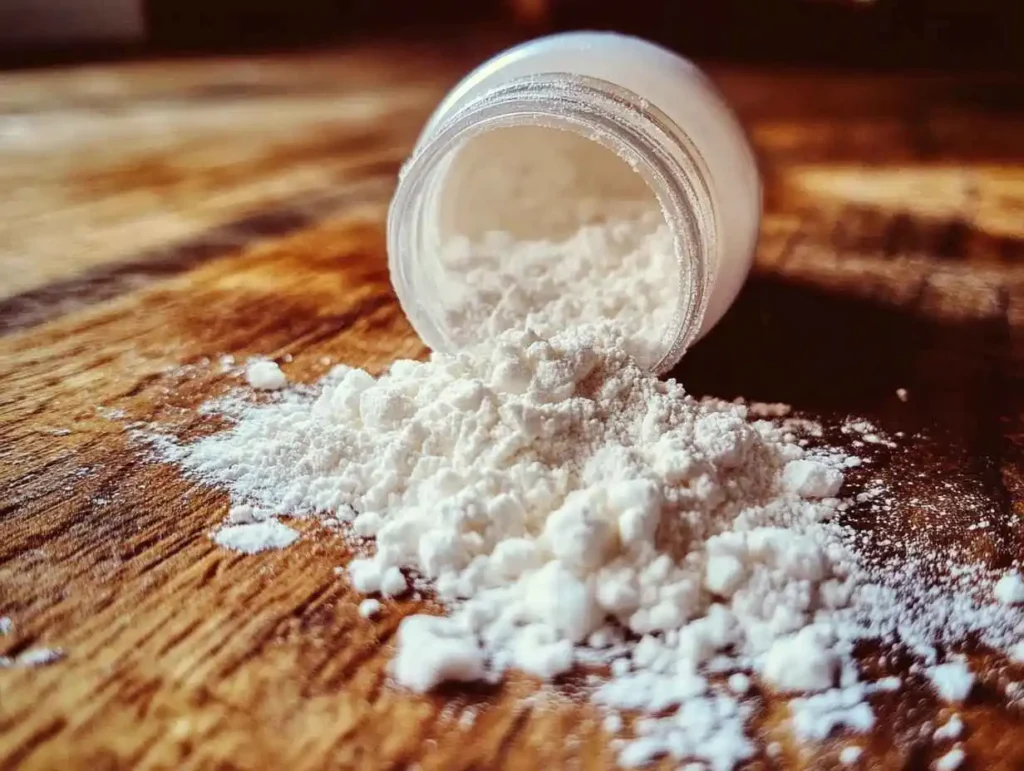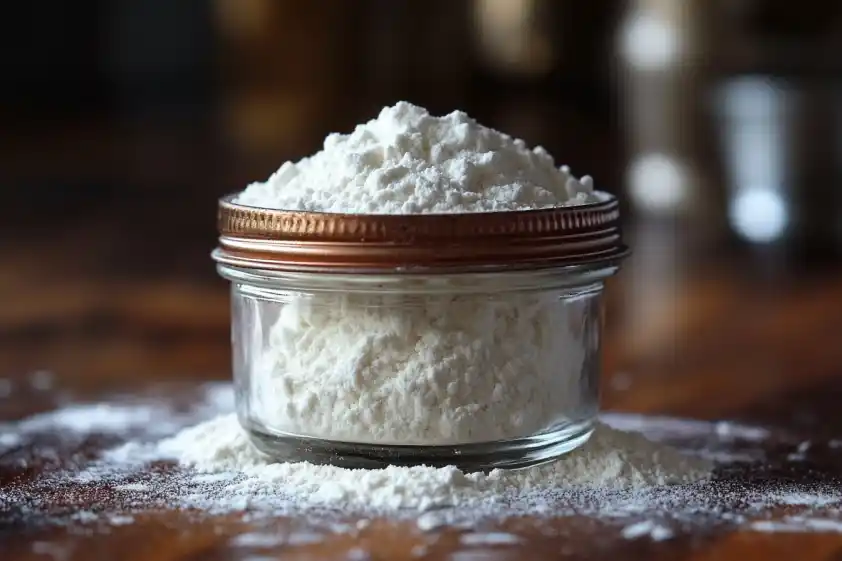Baking soda is a key ingredient in many bread recipes, but what happens to bread when you don’t add baking soda? Will it still rise properly, or will it turn out dense and heavy? If you’ve ever baked without baking soda—either by accident or on purpose—you may have noticed differences in texture, taste, and appearance.
In this guide, we’ll explore:
✅ How baking soda affects bread
✅ What happens when you don’t add baking soda to bread
✅ The best substitutes for baking soda
✅ Expert tips for baking without baking soda
Let’s dive into what happens to bread when you don’t add baking soda and how to make the best adjustments for delicious homemade bread.
Table of Contents
Understanding What Happens to Bread When You Don’t Add Baking Soda

What is Baking Soda, and Why is It Important in Bread?
Baking soda, also known as sodium bicarbonate, is a chemical leavening agent that plays a crucial role in baking. It helps bread rise by creating carbon dioxide gas when mixed with an acid, such as:
✔ Lemon juice – A natural acidic ingredient commonly used in baking
✔ Vinegar – Often used in combination with baking soda for leavening
✔ Buttermilk – Adds moisture and a mild tangy flavor while activating baking soda
✔ Yogurt – Provides acidity to help baking soda create air pockets in the dough
This chemical reaction is essential for achieving a light, fluffy texture in many baked goods. Without this reaction, the dough lacks leavening power, leading to dense, flat, and heavy bread. This brings us to the key question: what happens to bread when you don’t add baking soda?
How Baking Soda Works in Bread Dough
Baking soda is unique because it acts instantly when combined with an acid and liquid. Unlike yeast, which takes time to ferment and produce gas, baking soda starts working immediately upon mixing. This is why it’s a staple in recipes that don’t require yeast, such as:
✔ Quick breads – Like cornbread and zucchini bread
✔ Banana bread – Where the acidity of bananas helps activate baking soda
✔ Muffins and pancakes – For a soft, airy texture without needing fermentation
✔ Cookies and cakes – To create the right amount of spread and rise
Because baking soda reacts so quickly, it’s important to bake the dough or batter immediately after mixing. If you wait too long, the gas will escape before baking, resulting in a dense and underwhelming texture.
So, what happens to bread when you don’t add baking soda? The effects go beyond just appearance—the texture, structure, and even the flavor of the bread will change significantly. Bread may turn out flat, dense, and possibly too acidic or bland, depending on the recipe.
➡ Curious about whether bread can still rise without baking soda? Check out Will Bread Rise Without Baking Soda? to explore your options
What Happens to Bread When You Don’t Add Baking Soda? Effects Explained

Baking soda plays a crucial role in baking, helping dough rise and giving bread its characteristic light and airy texture. But what happens to bread when you don’t add baking soda? The changes can be significant, affecting everything from texture to volume and overall quality. Understanding these effects can help you adjust your recipe and avoid common baking mistakes.
How the Texture of Bread Changes Without Baking Soda
When baking soda is missing, your bread may experience several texture-related issues, including:
✔ Becoming denser and chewier – Without baking soda to create carbon dioxide bubbles, the bread lacks the lift needed for a light, fluffy texture. This can result in a heavier, more compact loaf.
✔ Lacking proper volume – Bread that normally rises high and airy may instead appear flatter and more compressed because there’s no chemical reaction to expand the dough.
✔ Having a uniform, compact crumb – Instead of soft, open air pockets, the interior of the bread may turn out tight and dense, making it feel chewy rather than tender.
If you want to prevent these issues, understanding what happens to bread when you don’t add baking soda is key. Fortunately, several substitutes can help you achieve similar results.
Why Bread May Turn Out Denser and Heavier
Since baking soda is responsible for producing gas bubbles that lighten and expand the dough, its absence means that:
❌ The dough won’t properly rise – Without leavening, bread stays heavy and thick.
❌ The structure remains dense – Instead of a delicate crumb, the inside of the bread feels more like a heavy cake or an undercooked loaf.
❌ It may take longer to bake through – A denser loaf means heat takes longer to penetrate, sometimes leading to an unevenly cooked center.
This is why many quick breads, like banana bread and cornbread, rely heavily on baking soda—without it, they lose their soft, fluffy texture.
➡ Want an alternative? Learn about The Best Baking Soda Substitutes for Bread to fix this issue and achieve the perfect rise in your homemade bread.
Taste and Flavor Changes When You Don’t Add Baking Soda to Bread
How Baking Soda Influences the Flavor of Bread
Baking soda balances acidity in bread recipes. Without it, some breads taste too tangy, while others lack depth, resulting in a flat or off flavor.
The Risk of a Sour or Bland Taste Without Baking Soda
If your bread contains acidic ingredients like buttermilk or yogurt, what happens to bread when you don’t add baking soda? It may end up tasting:
❌ Overly sour (due to unbalanced acidity)
❌ Bland and unappealing without the pH neutralization baking soda provides
➡ Want to balance flavors in bread? Read Brown Sugar Substitutes in Banana Bread.
How the Appearance and Crumb Structure Change Without Baking Soda
Why Bread Without Baking Soda May Not Rise Properly
Baking soda creates air pockets inside the dough. When omitted, your bread may:
- Rise unevenly or barely at all
- Look flat rather than domed and fluffy
- Have a denser, compact crumb instead of a soft, open structure
How Color and Crust Are Affected
Another aspect of what happens to bread when you don’t add baking soda is how it affects color and texture. Baking soda helps with browning, so without it, bread may:
❌ Look pale instead of golden brown
❌ Have a tougher, thicker crust
Best Alternatives When You Don’t Add Baking Soda to Bread
Using Baking Powder as a Substitute
Baking powder is an excellent one-to-one substitute for baking soda. Since it contains both an acid and a base, it doesn’t require additional acidic ingredients.

Yeast as a Natural Alternative
Yeast is a fermentation-based leavening agent that creates gas slowly, making it ideal for traditional breads like:
✔ Sourdough
✔ French bread
✔ Pizza dough
Other Natural Leavening Options
If you don’t have baking soda, try:
- Whipped egg whites – Adds air into the batter for a fluffier texture.
- Sourdough starter – Naturally ferments and helps bread rise.
➡ Want a banana bread recipe without baking soda? Check out Banana Bread Recipe Without Baking Soda.
Conclusion
So, what happens to bread when you don’t add baking soda? The answer depends on the recipe, but in most cases, your bread will turn out denser, flatter, and may have a slightly sour or bland taste due to the lack of pH balance and leavening action. Since baking soda helps create air pockets that give bread its soft, fluffy texture, omitting it can significantly impact the final result.
However, forgetting baking soda doesn’t mean your bread is ruined! There are plenty of ways to adjust your recipe and still achieve a great outcome. If you realize you left out baking soda, consider the following solutions:
✅ Use baking powder or yeast as a substitute – Baking powder contains its own acid and base, making it a great alternative, while yeast allows natural fermentation to create a similar leavening effect.
✅ Adjust the acidity of the recipe – If your bread includes acidic ingredients like buttermilk, vinegar, or yogurt, you may need to balance the flavors by adding a neutralizing agent.
✅ Experiment with natural leavening methods – Egg whites, sourdough starter, and other natural techniques can help incorporate air into the dough and improve texture.
While baking soda is a valuable ingredient in many recipes, understanding what happens to bread when you don’t add baking soda gives you the flexibility to adapt and make informed adjustments. By using suitable substitutes and modifying your technique, you can still enjoy delicious, homemade bread with great texture and flavor—even without baking soda!
Happy baking!

